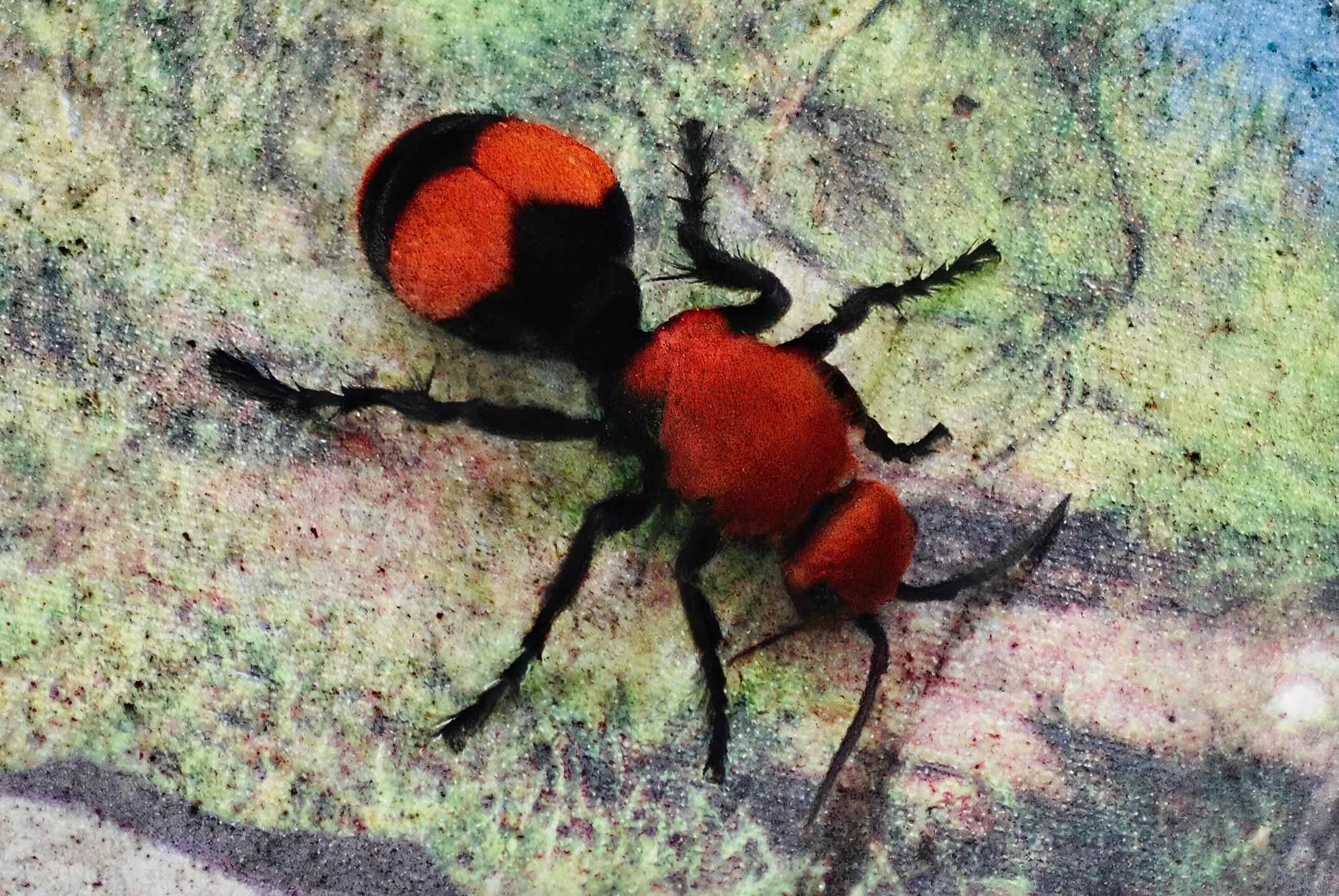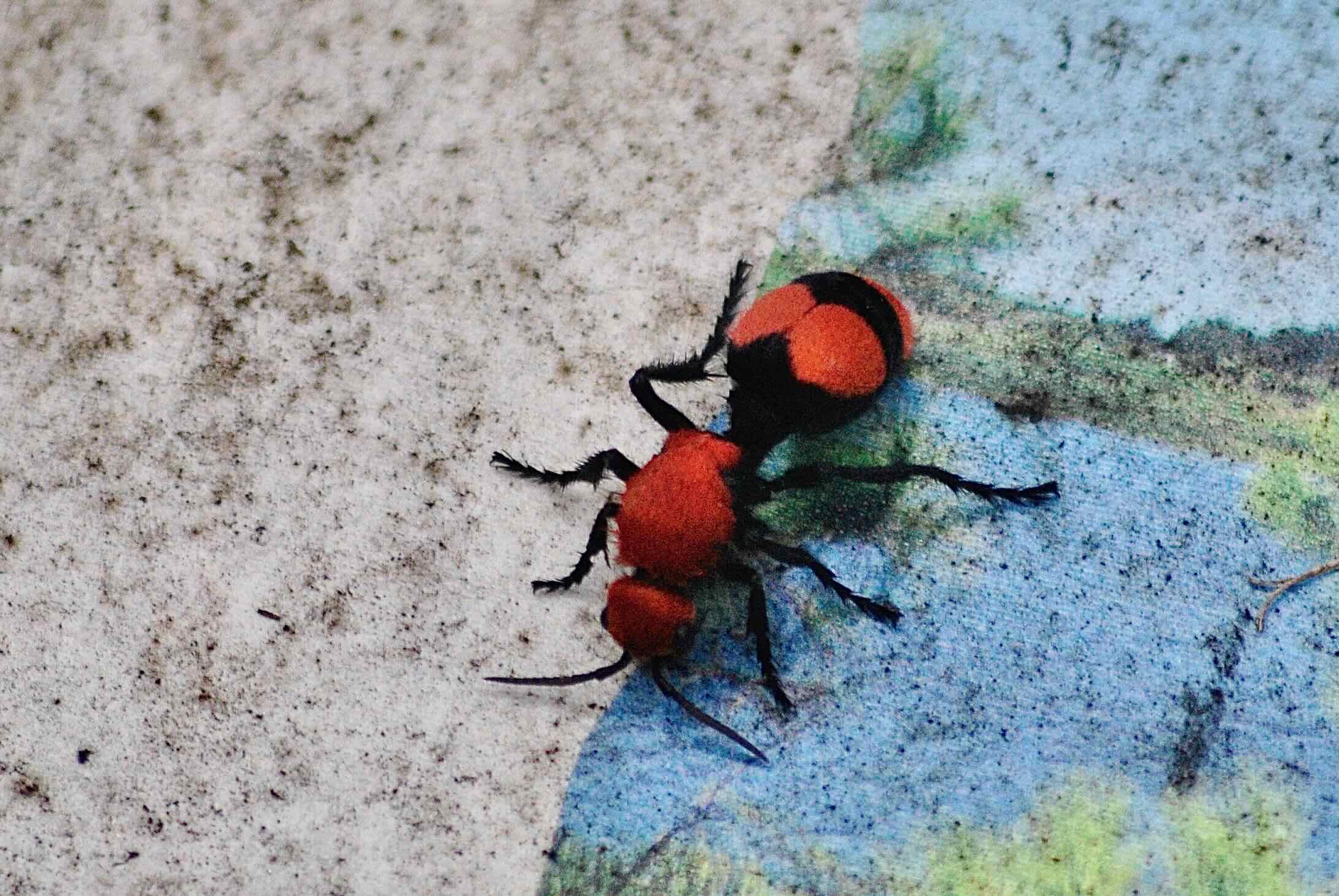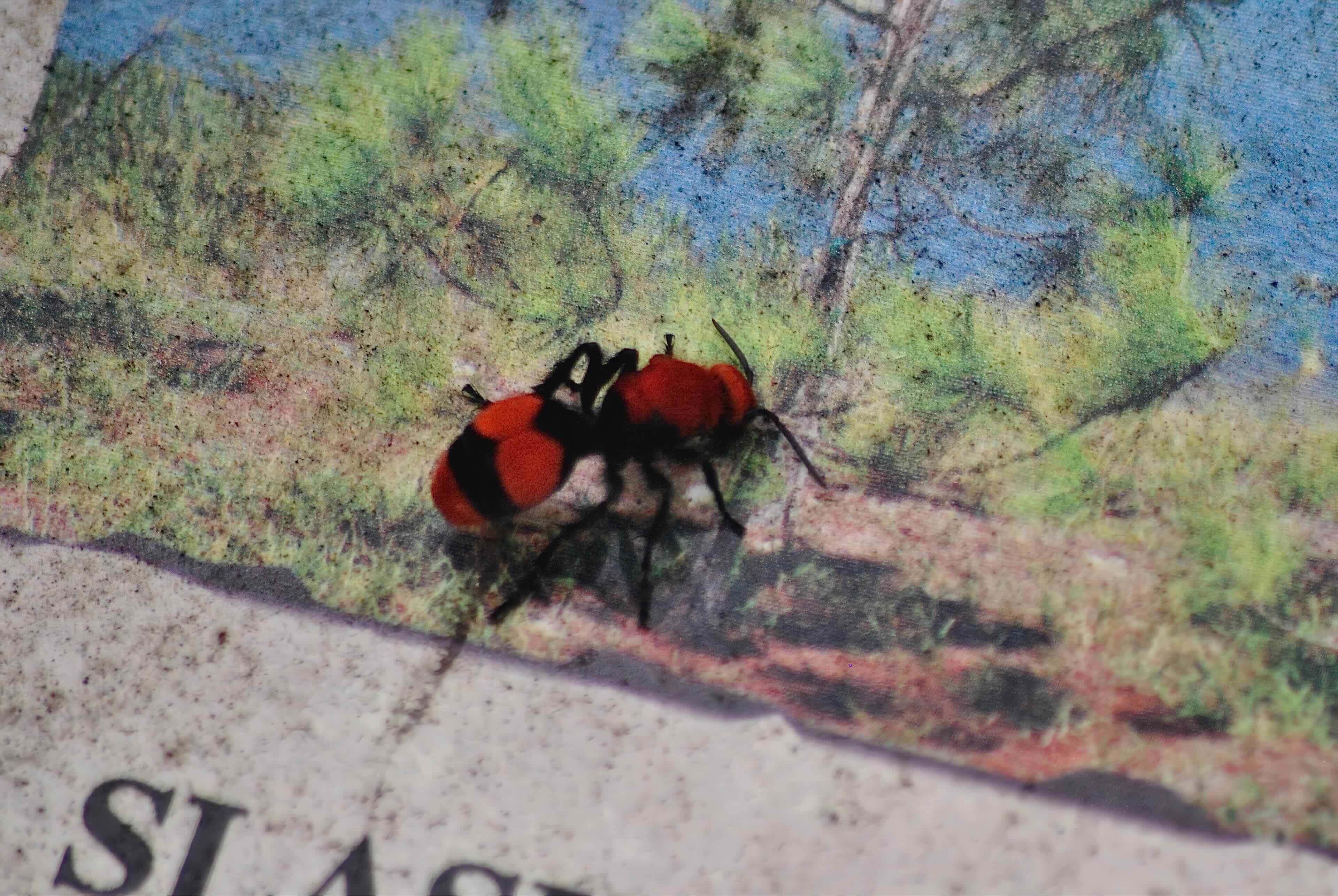
Eastern red velvet ant, photographed at Wellington Environmental Preserve at Marjory Stoneman Douglas Everglades Habitat, Wellington, Palm Beach County, in June 2015.
The names are misnomers. It is not an ant and it’s never killed a cow, at least to our knowledge.
We’re talking about Dasymutilla occidetalis, commonly known either as the eastern red velvet ant or the cow killer ant.
Despite its ant-like looks, Dasymutilla occidetalis, is actually a wingless wasp. And despite possessing a sting said to be so nasty that it can kill a cow, the number of bovine deaths attributed to the cow killer is roughly zero.
The eastern red velvet ant is the largest and most frequently seen velvet ant species — there are some 8,000 worldwide, including 50 found in Florida. (We feel almost obligated to repeat the fact that these are not ants, but rather wasps. It’s just hard for us to call it an ant when it’s not. Hopefully, we can shake that urge before we finish this.)
Eastern red velvet ants have a body three-quarters of an inch long, and we’ve seen some reliable sources that say it can reach an inch. Males are slightly smaller than females, and possess wings, which the females do not. In that regard, they are like ants. Males also don’t have stingers.

Red velvet ants have a mostly black body with large, red or orange patches. Their bodies are hairy (actually covered with hair-like structures called setae), giving them the “velvet” look.
Females have a stinger, and a rather large one, up to half the length of their abdomen. The Mississippi State University Extension Service says it can be a half-inch long, and that people who have been stung say the cow-killer name is appropriate. It’s that painful. Again, male red velvet ants are unarmed.
Oh and just for fun, we’ll mention here that something called tarantula wasps (Pepsis species) are credited with having the world’s most painful wasp sting, several rungs above red velvet ants. Bullet ants have the most painful bite or sting of the insect world. Justin Schmidt, the scientist who developed the Schmidt Sting Pain Index, described the wasp's sting as "“Blinding, fierce, shockingly electric. A running hair dryer has just been dropped into your bubble bath.”.
The good news is that eastern red velvet ants are docile creatures; they ain’t lookin’ for trouble. They’re not going to sting unless somehow provoked, stepped on for example. We do not recommend trying to handle them.
Their brightly colored appearance serves as fair warning to predators not to mess with them, a common defense in the natural world. (Technically, it’s called aposematic coloration.) Think of monarch butterflies as probably the best known example. If a would-be predator ignores that warning and attacks a red velvet ant, said red velvet ant will release a chemical secretion and make a screeching sound that further serve as warnings.
Should the assailant persist, he’ll encounter a body shaped to deflect attempted bites or stings. Red velvet ants also possess incredibly hard bodies; by one calculation, it requires 11 times the force to crush a red velvet ant than it does a honeybee.

And of course, there’s that stinger attached to an abdomen so flexible that it allows a red velvet ant to wield it almost like a skilled fencer might a foil.
All of this makes red velvet ants nearly impervious to attack. In one study, various predators — lizards, gerbils, ants and spiders were presented with a red velvet ant as a potential meal. Of 59 encounters, only two red velvet ants were eaten; some of were attacked and let go, but most were left untouched.
Oh and one more item: velvet ants are practitioners of Mullerian mimicry, meaning the colorful looks of other velvet ant species reinforce the warning for all similar looking velvet ants.
So what’s on the menu for an eastern red velvet ant? For the adults, it’s nectar. For their offspring, larvae, particularly certain ground-nesting bumble bees, flies and cicada killer wasps.
It should be noted that red velvet ants are solitary creatures (all true ants are social animals, by contrast). Their prey are also solitary creatures. Female eastern red velvet ants will hunt for the ground nest of a prey species, dig down and deposit an egg on the pupae of the bee, fly or wasp. When the velvet ant hatches, it eats the pupae; it goes through various development stages like other insects, then emerges from the burrow and begins to hunt for a mate. The life cycle repeats itself.
Eastern red velvet ants are found from Connecticut south to Florida and west to Texas.
Eastern red velvet ants are members of Mutillidae, the velvet ant family. Another common name: cow ants.
Wellington Environmental Preserve at Marjory Stoneman Douglas Everglades Habitat
